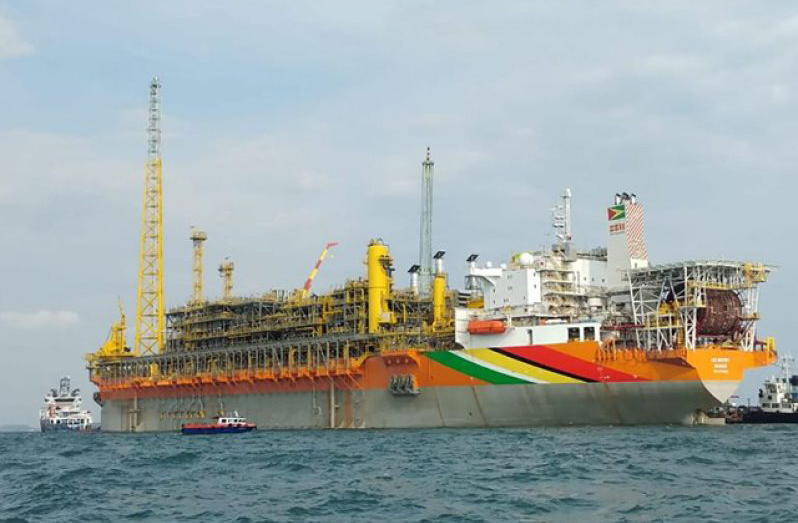–as company removes discharge silencer for further assessment
PRODUCTION levels at ExxonMobil’s Liza Destiny Floating Production Storage and Offloading (FPSO) vessel are gradually returning to normal, as efforts are underway to further assess a faulty discharge silencer, which was removed recently.
Production at the Liza Destiny, offshore Guyana, was reduced significantly, from 120,000 barrels of oil per day to 30,000, barrels because the company encountered problems related to the discharge silencer, which is a component of the recently re-installed flash-gas compressor.
The compressor was damaged in January, and resulted in the company having to temporarily increase gas-flaring to above pilot levels in order to maintain safe operations. The faulty contraption was subsequently removed and sent to Germany for immediate repairs. The repaired and upgraded components of the flash-gas compression system have been safely re-installed, but a comprehensive three-phase testing programme was undertaken to ensure full safety.
It was during the final stage of the three-phase testing programme that the company encountered a problem with the discharge silencer. A discharge silencer is used to attenuate noise produced by the expansion of air, steam or gas at elevated pressure to atmospheric pressure.
In a recent update, ExxonMobil said the silencer has been removed and is being further assessed, so as to determine the necessary scope of repairs and or/modifications.
“We estimate that repairs or replacement will take approximately three months. Additionally, plans initiated in 2020 are progressing to install a redesigned third-stage flash-gas compression system at the end of this year,” ExxonMobil’s Public and Government Affairs Adviser, Janelle Persaud said in an official update on Wednesday.
Even amidst the ongoing efforts to repair the faulty equipment, the company has started to ramp up production, which has since moved from 30,000 barrels of oil per day to between 100,000 and 110,000 barrels per day, at a flare level of no more than 15 Million standard cubic feet of gas per day (Mscfd).
Those operating parameters, according to the company, were defined after careful consideration of safety, environmental, technical and economic factors, as well as discussions with the relevant government agencies on the best path forward, while repairs and upgrades are ongoing.
“ExxonMobil Guyana is extremely disappointed by these ongoing technical challenges, but we are proud of the team offshore that continues to work safely and manage operations efficiently during the COVID-19 pandemic,” Persaud said, adding that the company will continue to work with the relevant parties to rectify the situation as soon as possible.
Despite the challenges facing the company, Guyana’s sixth oil lift was unaffected, as it was safely and successfully completed recently, at planned quantity, and in keeping with the Crude Lifting Agreement and lifting schedule. Lifts are done every eight to nine days, and, with production levels low, there were concerns that the operator would not meet the quota of just about one million barrels within the expected time.
Although the country was able to get its sixth lift in time, the Ministry of Natural Resources registered the government’s disappointment in the operator’s inability to resolve the existing situation. “The GoG is, as would be expected, highly disappointed with the operator’s inability to resolve this situation to date, and will continue to monitor the levels of daily crude oil output and flaring to best allow for an economically-feasible level of production during this period.
“The GoG is currently examining the implications of the loss of output, and consequently, loss of income and revenue, including measures that it may have to institute to protect national interest,” the Ministry of Natural Resources said in a recent press statement.
ExxonMobil Guyana has since said that it is extremely disappointed by the design issues and continued underperformance of the compressor, and will be working with the equipment manufacturer, MAN Energy Solutions, and the vessel’s operator, SBM, to rectify the situation. This performance is below ExxonMobil’s global expectations for reliability, the company said.



.jpg)








